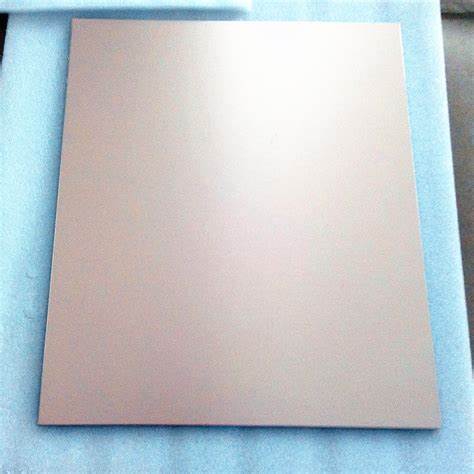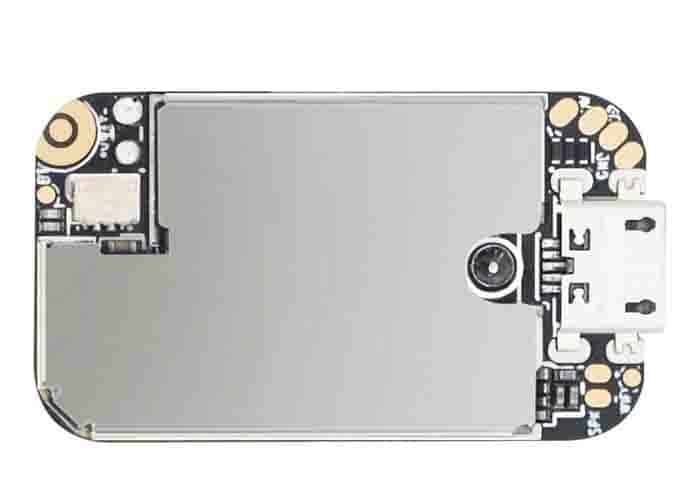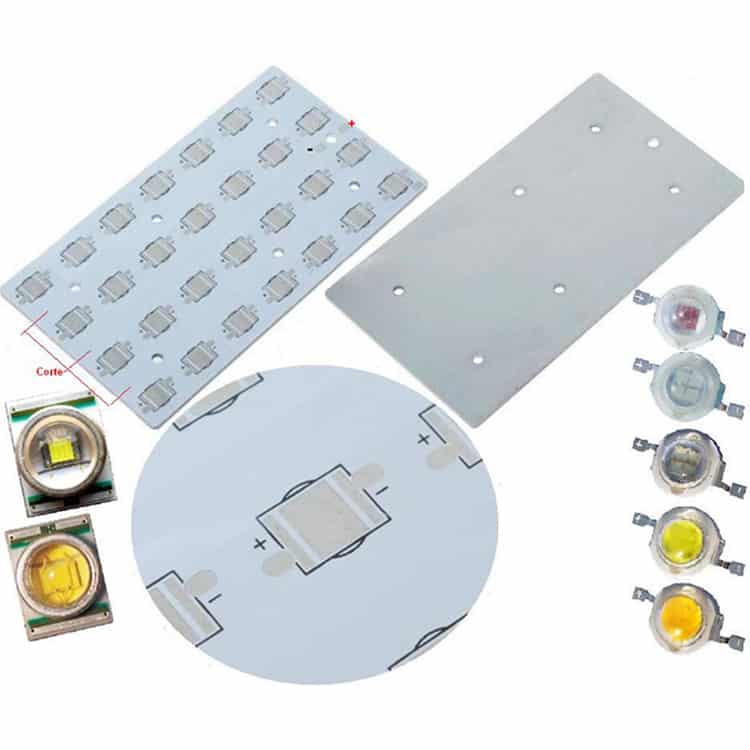Metal is a core material used in the fabrication of printed circuit boards. There are different types of metals used in printed circuit boards. They include copper, aluminum, and silicon steel plates. However, aluminum seems to be the most preferred metal for PCBs. Aluminum is lightweight metal with great thermal and mechanical properties. Also, aluminum can localize and channel thermals away from the crucial components in a circuit board. Due to its benefits, it is commonly used as the base material for a circuit board.
The constant development in the electronics industry as regards miniaturization as made aluminum substrate a reliable choice for some electronic devices. Aluminum PCB has become more popular in the PCB industry. Aluminum is a material that offers a lot of thermal and dielectric properties, hence, its use in some devices.
What is an Aluminum Clad PCB?
An aluminum printed circuit board comprises a dielectric metal base usually bonded with a circuit layer known as copper. Also, an aluminum clad PCB is often found in modern day electronic devices. This circuit board enables heat dissipation in electronic devices.
In addition, this board is usually designed from a thin layer of dielectric material bonded between a copper foil and a metal base. The aluminum PCB manufacturer etches the copper foil in a circuit pattern and the base discharges heat away from the circuit.

What does an Aluminum Clad PCB Comprise?
An aluminum PCB comprises different layers:
Copper foil layer
The copper foil layer is the first layer of an aluminum PCB. This layer comprises copper foil. The copper foil is usually etched to create a printed circuit. Also, the electrolytic copper foil helps to connect the devices for proper functionality. Furthermore, aluminum clad PCB has a better tolerance and current drive compared to traditional FR-4 PCB.
Dielectric layer
This layer is often referred to as the core of the aluminum clad PCB. The dielectric layer bonds, insulates, and conducts heat. Also, it is the biggest thermal barrier in the aluminum PCB insulating layer. The dielectric layer will dissipate heat produced in the device if it possesses a better thermal conductivity.
Aluminum base layer
The aluminum base layer comprises aluminum alloy substrate. There are certain factors that determine the functioning of the base layer. Such factors include the metal substrate cost, thermal conductivity, and thermal expansion coefficient.
Aluminum base membrane
This is the last layer of the aluminum PCB. It comprises aluminum alloy. Also, the aluminum membrane serves as a protective layer. Therefore, it protects the aluminum surface against scratching and etching.
Manufacturing Challenges of Aluminum Clad PCB
There are some challenges associated with the manufacturing of aluminum printed circuit board. Here, we will discuss the challenges and how to handle them.
Solder mask printing
Aluminum PCB manufacturers encounter some difficulties in the solder mask printing due to the thickness of the copper foil. The etched image will have a huge difference between the base board and the trace surface due to the thickness of the trace copper. Therefore, it will be difficult to carry out solder mask printing.
Copper etching
Aluminum PCBs usually have thicker copper foils. When the copper foil is above 3 oz, the etching will need width compensation. Otherwise, the trace width won’t have a good tolerance. Therefore, it is crucial to design the trace width compensation accurately.
Mechanical manufacturing
Mechanical manufacturing is a process that involves a lot of steps like V-scoring, mechanical drilling, and molding. The professional milling and electric milling cutter should be integrated for low-volume manufacturing. Also, the PCB manufacturer should adjust the drilling parameters to prevent the generation of burr.
Types of Aluminum PCBs
There are four major types of aluminum PCB. This includes:
Aluminum flex PCB
An aluminum flex circuit board provides a polyimide resin system that has ceramic fillers. Also, this PCB has great flexibility and electrical insulation. It has the ability to bend and you can use them according to your needs.
Hybrid aluminum PCB
This type of aluminum clad PCB comprises non-thermal materials. These materials are independent and as well bind to the aluminum base. The commonest construction is a 4-layer or a 2-layer subassembly created from FR-4. It is easy to bond this layer to aluminum base with the help of thermal dielectrics.
THT aluminum PCB
In this type of aluminum PCB, a layer of aluminum is pre drilled and then back-filled. Most times, the pre-drilling and back-filling occur before lamination. Also, the plated through holes go through clearance to ensure electrical insulation.
Multilayer aluminum PCB
Multilayer aluminum boards comprise several layers of thermally conductive dielectrics. Also, these boards feature one or more layers of circuitry. One of the benefits of using multilayer aluminum PCBs is that they offer a high level of heat conductivity when used in complex devices. Therefore, they are widely used in power supply products.

Properties of Aluminum Clad PCBs
Aluminum clad PCBs feature exceptional thermal and dielectric properties. Generally, aluminum is a good material that allows heat to dissipate from electronic components. Furthermore, aluminum provides great strength and durability to electronic appliances due to the properties it possesses.
Exceptional thermal dissipation
Lack of thermal dissipation can lead to failure in electrical components. Therefore, thermal dissipation is a property of a good PCB. Aluminum clad PCB ensures heat dissipation in electronic components of a printed circuit board.
Dimensional stability
The dimensional stability measures the changes in the physical size of a material in response to a change in temperature. Aluminum clad PCB offers better dimensional stability than insulating substrate in a circuit board. For example, if an aluminum board passes through heat from 30 degrees Celsius to about 150 degrees Celsius, the dimensional change will be about 3.0%.
High dielectric strength
Dielectric strength measures the greatest electric field a material can tolerate. Aluminum clad PCBs feature high dielectric strength. Therefore, this PCB has better insulating properties.
Bending resistance
Aluminum offers an exceptional bending resistance. Also, this material is easy to bend. Aluminum is a light, soft, and ductile material. Therefore, aluminum PCBs have the ability to bed without cracking or breaking.
Electromagnetic shielding
Aluminum clad PCB offers excellent electromagnetic shielding. Electromagnetic shielding is a barrier that protects PCBs from environmental interference. Also, it can prevent emissions from a device interfering with another device in an environment. This property helps to prevent or reduce energy transfer.
Benefits of Aluminum PCBs
An aluminum PCB offers a lot of benefits when used in various applications. Due to these benefits, aluminum PCBs have become so popular. Below are a few benefits of aluminum PCBs.
Heat dissipation
An aluminum PCB has a better thermal conductivity. Therefore, this circuit can dissipate heat. Aluminum is a material that can discharge heat away from crucial components. Crucial components in a circuit board can damage when exposed to heat. Therefore, it is crucial to use a material that has heat dissipation properties when fabricating circuit boards.
Lightweight
Aluminum is a lightweight and ductile material. This material adds resilience and strength to PCBs without adding extra weight.
Environmentally friendly
It is easy to assemble aluminum PCBs and this helps to conserve energy. Also, aluminum is a non-toxic and recyclable material. Aluminum substrate is environmentally friendly, which makes them safe for the environment.
Durability
Aluminum PCBs are very durable. There is a low risk of accidental breakage when manufacturing and handling these PCBs. Also, they offer greater strength compared to ceramic bases and fiberglass.
Easy accessibility
Aluminum is an accessible and low cost material. Therefore, aluminum printed circuit boards are cheap to manufacture. The manufacturing costs of aluminum PCBs are low. Therefore, this makes it easy to fabricate high quality aluminum PCBs at an affordable cost.

Applications of Aluminum PCBs
Consumer electronics
The lightweight nature of aluminum PCB makes it ideal for use in consumer electronics. You will find aluminum PCB in lighting fixtures, camping gear, televisions, and more.
Radio and audio equipment
Since aluminum PCB can redirect heat from the crucial components on a board, it serves a good function in audio equipment. Also, audio equipment like preamps and mixers feature aluminum PCBs. You will also find them in output and input amplifiers.
Medical devices
Aluminum PCBs are commonly used in medical devices like surgical lighting tools, medical operating theatre lighting, high-power scanners, and more.
LED circuits
Aluminum substrate is suitable for use in LED circuits. This is because this substrate ensures the minimum possible temperatures and maximum operational life. Furthermore, aluminum PCB has promoted the development of various energy-saving lights. This PCB also offers a high thermal conductivity.
Computer system
Aluminum substrate plays a crucial role in the development of some computer parts like motherboard and floppy disk drive. Also, this PCB offers great heat dissipation, which makes it ideal for use in some computing devices.
Automotive
You will find aluminum substrate in industrial vehicles. Also, these PCBs are available in automatic safety control system, ignition, and voltage regulator.
Conclusion
We have shed more light on aluminum PCBs and its uses in this article. Aluminum substrate has become a popular choice among PCB manufacturers due to the benefits it offers. Also, this substrate is widely used in various applications.

